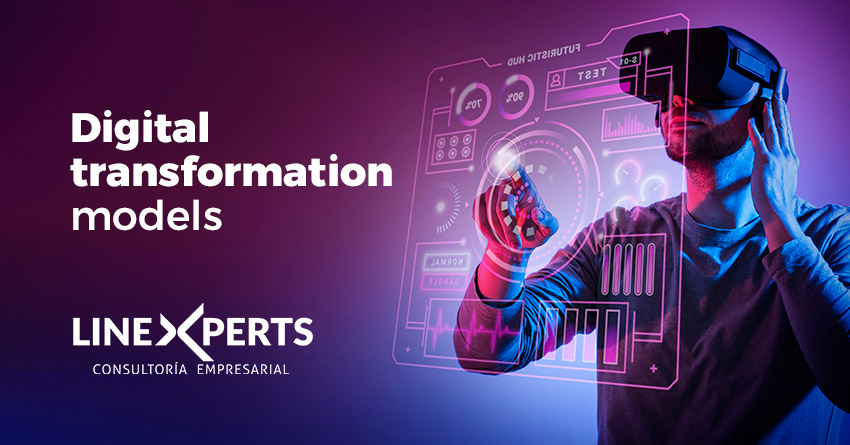Digital transformation models
New trends have led thousands of companies to become interested in the virtual environment in order to survive. This has led to the emergence of digital transformation models, or rather, digital evolution models.
Ever heard about the models of digital transformation? It is likely that you have seen it because of the social phenomena that have occurred lately. However, today we should no longer talk about digital transformation but about "digital evolution". Why? The answer is simple: most companies have already transformed in one way or another.
This has happened with the digitalization of business, and current and future challenges:
-
Cooperative and win-win work between customers and suppliers.
-
Potentiation together with new ways of communicating the brand in the market.
-
End-user experiences with the digital service.
The above can be summed up in one undeniable reality: digital transformation, or better yet, digital evolution is here to stay.
Concept of digital transformation or evolution
Do you know what digital evolution is? This refers to a change or variation in terms of a physical process to a digital one. That is, digital tools such as process automation, information systems, applications, robotization of business processes and logistics, among others, are used to improve business activities by reducing process times, reducing the rate of human error, increasing the speed of time to share, customer knowledge, market and competition, among many others.

A digital transformation or evolution is a remodeling or reorganization of a process that has been done in one way, and now it is done in a much more optimized way, taking full advantage of technological advances. For example:
-
Paper documents to digital files.
-
Physical forms to virtual formats in Microsoft office automation tools.
-
Forms of payment by cash or check to digital cards, or online transfers.
-
Advertising in digital marketing flyers, use of social networks such as Facebook, Instagram, and even TikTok.
-
Manual processes to automated and/or robotic processes using computing power to increase speed and reduce human error.
Digital transformation is a set of projects (program), which seeks and allows aligning all areas of the organization in order to maintain and grow in an increasingly complex, changing and competitive market. Digital transformation or evolution can be compared to the metamorphosis process of a caterpillar, which symbolizes the company.
When it was a larva it consumed leaves (physical processes only). However, when it enters the chrysalis (changes), and after a long time (planning), it becomes a butterfly (digital transformation). Now it can be free and give its full potential.

Digital transformation features
Do you know the characteristics of digital evolution? Well, digital transformation is characterized as an evolution in the structuring of a business, causing changes in procedures, labor, and other departments.
It is a key element in innovation that seeks to meet the needs of the consumer or end user. It also ensures a balanced relationship between employees, suppliers, headquarters and other stakeholders.
The following is a summary of the digital evolution characteristics:
-
Uses technology to carry out processes.
-
New digital tools impact business value.
-
Structural changes occur in the organization.
-
There are new parameters in the use of money and financial processes.
Digital transformation process
The process of transformation or digital evolution is also known as the implementation phases of digital evolution. These are intended to show the step by step of how a business changes its entire structure for a more sophisticated one, related to technological advancement.
Observe the digital transformation process that a business goes through:
-
Analysis of established business processes.
-
In-depth research.
-
Workforce readiness for digital transformation.
-
Creation of the roadmap (set of interrelated and connected projects and initiatives).
-
Planning, execution, monitoring and control, and closure of projects and initiatives with new tools
-
Evaluation of results and definition of continuous improvement New projects and initiatives.

It is also recommended that the following aspects be taken into account:
-
Digital vision
-
Objectives of digital evolution
-
Work team: Who will be part of the company's digital evolution?
-
Diagnosis and verification of maturity status
-
Process prioritization
-
Where we want to go with digital evolution
-
Route definition
Transformation or digital evolution models have given a new twist to business, to focus on the customer and must be in tune with technological advances to avoid being left behind.






